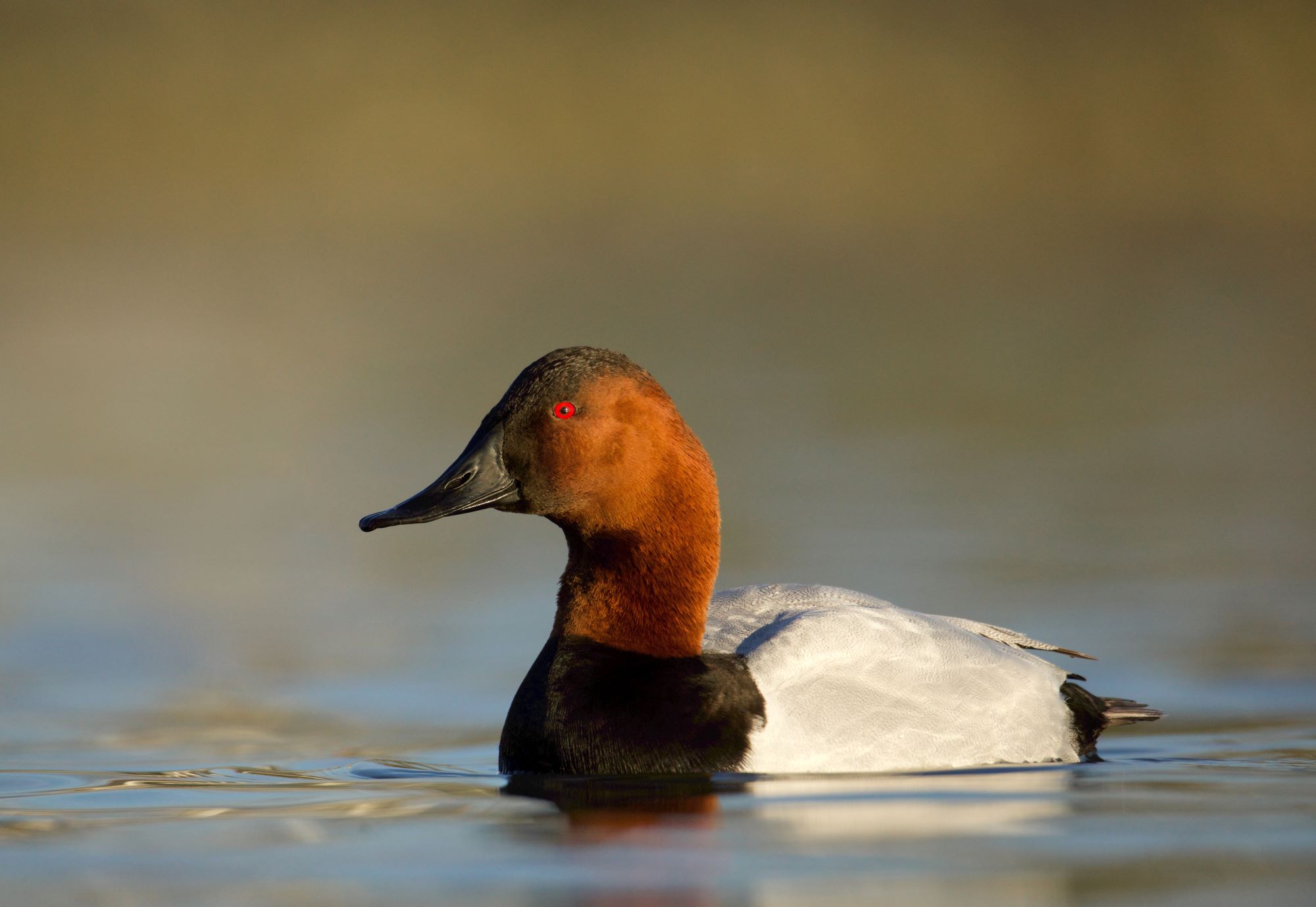
Canvasbacks in Utah
Canvasbacks, a distinctive and elegant species of diving ducks, are a notable presence in Utah's larger bodies of water. Scientifically known as Aythya valisineria, these ducks are easily recognizable by their unique wedge-shaped heads and long, sloping bills. Male Canvasbacks are particularly striking, featuring bright red eyes, chestnut red heads, black breasts, and white bodies, while females are more subdued with brownish bodies and lighter, tawny heads. In Utah, Canvasbacks are typically found in large lakes, reservoirs, and occasionally in parts of the Great Salt Lake, where they prefer open waters that provide ample diving opportunities. They are most commonly seen during the winter months in Utah, as they migrate south from their northern breeding grounds.
The diet of Canvasbacks is primarily composed of aquatic vegetation, particularly wild celery, from which their scientific name is derived. They also consume a variety of other aquatic plants, invertebrates, and small fish. Their specialized, sloping bill is perfectly adapted for foraging in the sediment of water bodies. In Utah, Canvasbacks contribute to the aquatic ecosystem by controlling the growth of aquatic vegetation and maintaining a balance in the food web. Their feeding habits, which often involve diving to significant depths, are a testament to their adaptation to life in aquatic environments.
While Canvasbacks do not typically breed in Utah, their presence during the winter months is significant. During this time, they can be seen in flocks, sometimes mixed with other species of diving ducks, which contributes to the dynamic birdwatching opportunities across the state's wetlands. The conservation of suitable aquatic habitats is vital for the survival of Canvasbacks during their winter stay in Utah. These environments provide essential resources for feeding and resting, crucial for the ducks as they endure the colder months and prepare for their northward migration in the spring.
For birdwatchers and wildlife enthusiasts, the arrival of Canvasbacks in Utah offers an excellent opportunity to observe these unique birds. Their striking appearance, diving skills, and the role they play in the aquatic ecosystem make them a fascinating subject for observation and study. The presence of Canvasbacks in Utah's lakes and reservoirs during the winter adds to the state's rich biodiversity, making it a prime destination for birding enthusiasts and nature lovers alike.
In summary, Canvasbacks are an important part of Utah's birdlife, particularly in the colder months. Their migratory presence highlights the state's role in supporting diverse bird populations and underscores the importance of healthy aquatic ecosystems. Efforts to protect and manage these habitats are essential for the continued survival and prosperity of Canvasbacks and other migratory waterfowl species. Observing these ducks in Utah's vast and varied aquatic landscapes is not only a delight for birdwatchers but also an opportunity to appreciate the complex ecological relationships that sustain the state's diverse wildlife populations.